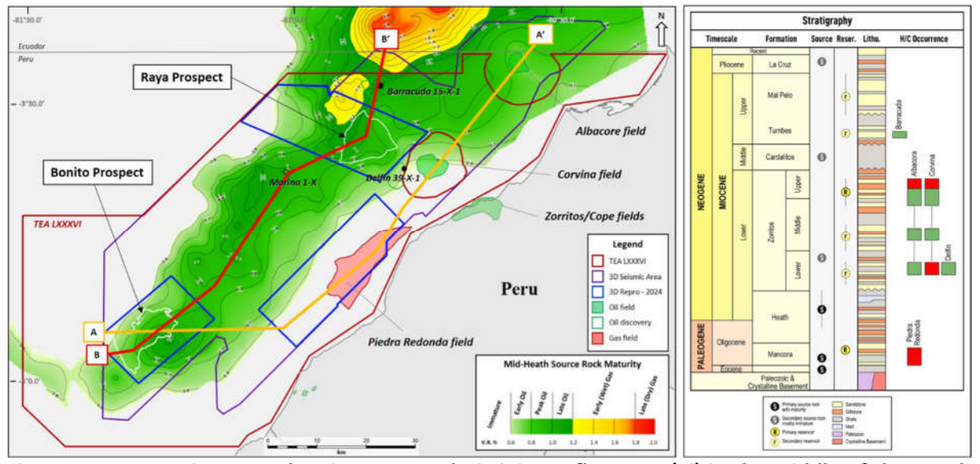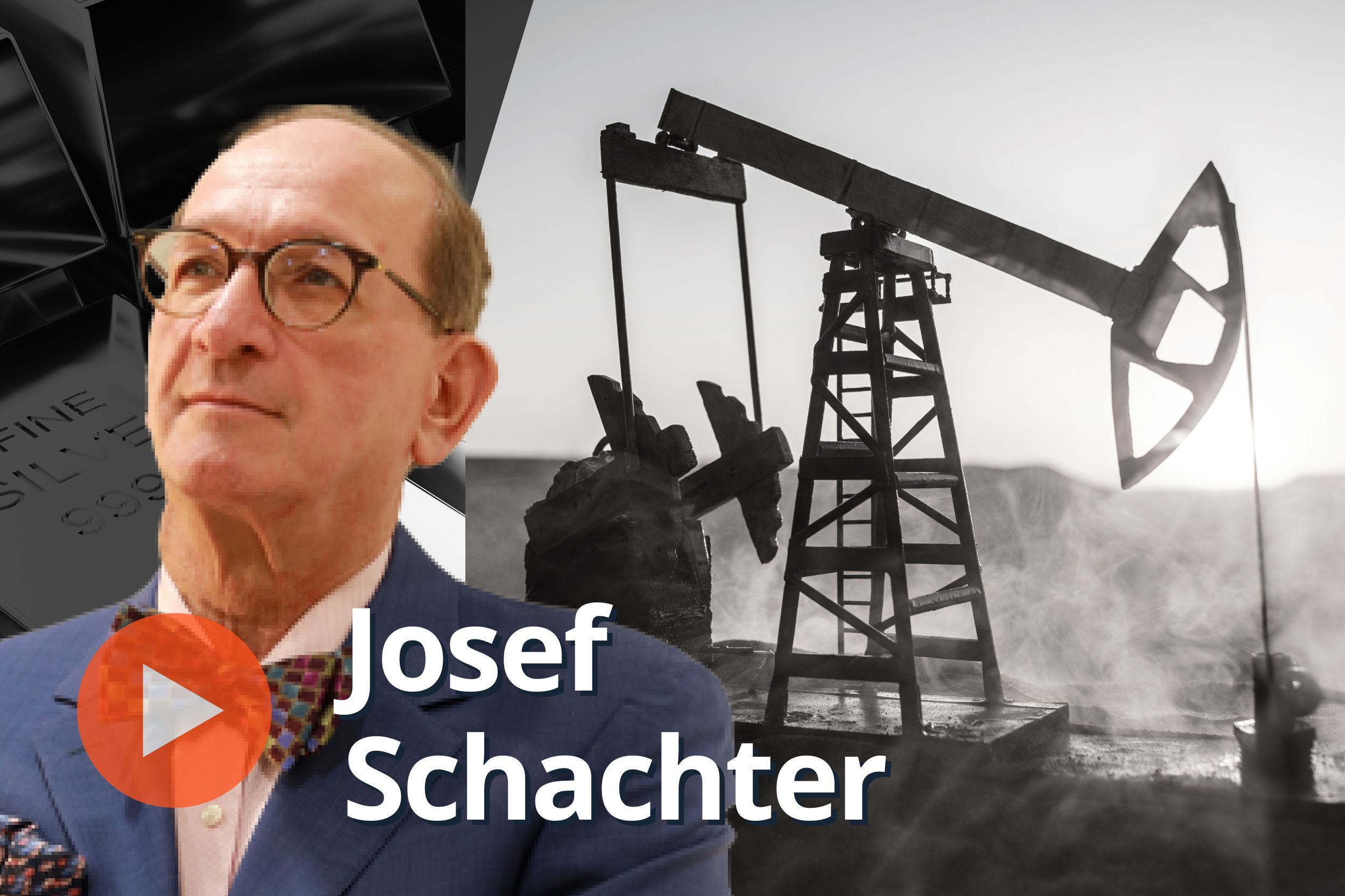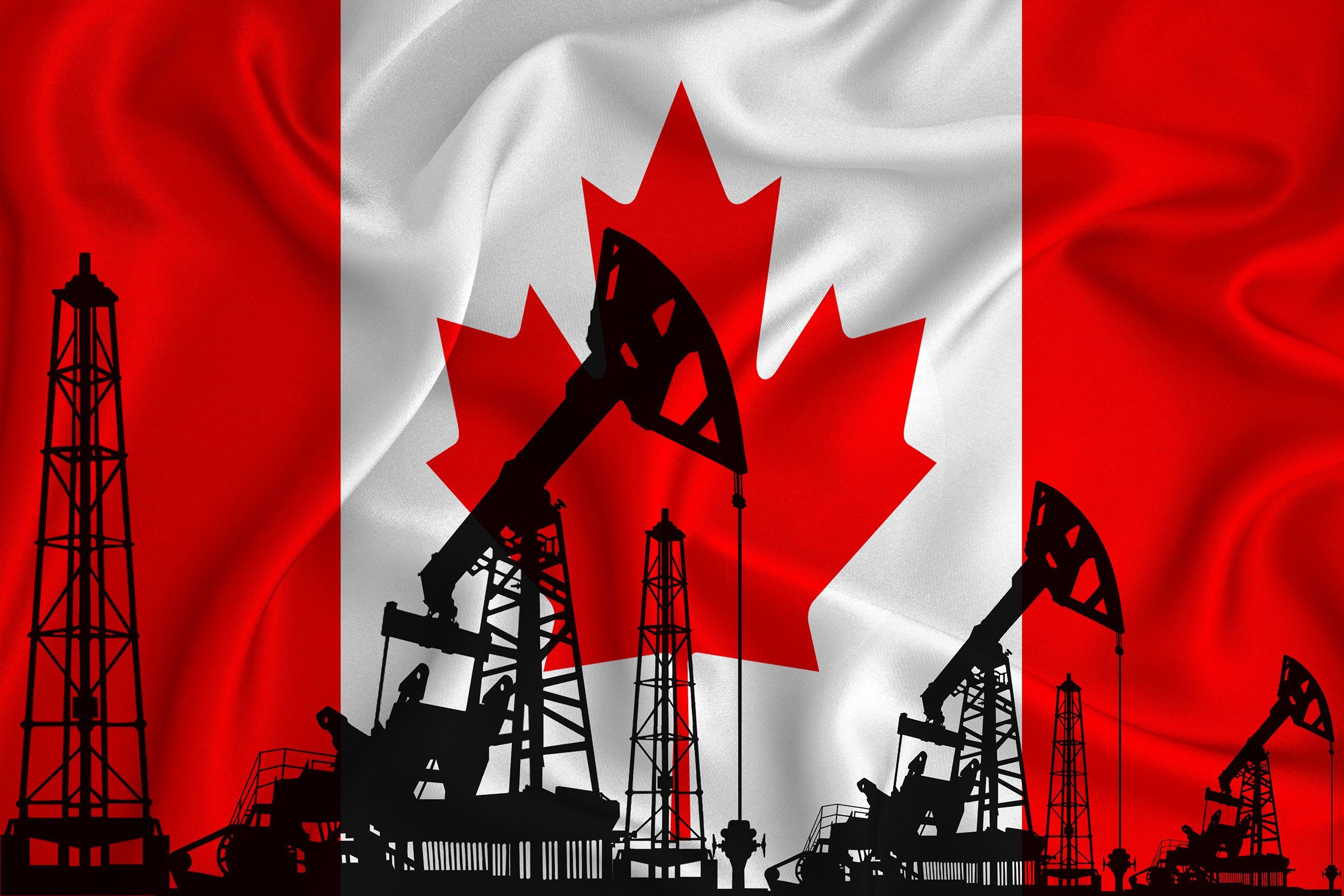
June 03, 2024
Condor Energy Ltd (ASX: CND) (Condor or the Company) is pleased to provide an update on exploration progress at its Technical Evaluation Agreement (TEA) offshore Peru where two large oil prospects (Raya and Bonito) have already been identified and regional mapping shows that the primary source rock interval, the Oligocene/Miocene aged Heath Formation, is mature for oil generation over much of the TEA area.
HIGHLIGHTS
- Maturation mapping shows that at least two source rock intervals are present within the TEA
- Heath Formation source rocks shown to be oil mature over majority of the TEA
- Zorritos Formation reservoirs (primary target) have access to oil charge from mature Heath Formation source rocks
- Piedra Redonda gas field most likely to be charged by deeper source rocks in the Mancora formation
- Unexplored deep gas play in the TEA identified

The Raya and Bonito prospects are large features in the Zorritos Formation, which present structural closure at multiple levels and the potential for stacked pay with multiple Zorritos reservoir-seal pairs present.
Based on analysis of surface outcrops, cuttings and core samples from previous wells published by Perupetro (the Peruvian national oil regulator), there are numerous potential source rock intervals in the Tumbes Basin.
The Company recently completed an interpretation of the wider regional seismic data which mapped key intervals and confirmed that the Heath Formation (Figure 1) and Mancora Formation likely sit within the maturity window for oil and gas generation respectively.
Click here for the full ASX Release
This article includes content from Condor Energy, licensed for the purpose of publishing on Investing News Australia. This article does not constitute financial product advice. It is your responsibility to perform proper due diligence before acting upon any information provided here. Please refer to our full disclaimer here.
CND:AU
The Conversation (0)
26 September 2024
Condor Energy
Rare world-class hydrocarbon exploration opportunity
Rare world-class hydrocarbon exploration opportunity Keep Reading...
29 January 2025
Quarterly Activities/Appendix 5B Cash Flow Report
Condor Energy (CND:AU) has announced Quarterly Activities/Appendix 5B Cash Flow ReportDownload the PDF here. Keep Reading...
22 January 2025
A$3M Placement to Advance High-Impact Workplan for Peru
Condor Energy (CND:AU) has announced A$3M Placement to Advance High-Impact Workplan for PeruDownload the PDF here. Keep Reading...
20 January 2025
Trading Halt
Condor Energy (CND:AU) has announced Trading HaltDownload the PDF here. Keep Reading...
15 January 2025
Piedra Redonda Gas Field Best Estimate Resource of 1 Tcf
Condor Energy (CND:AU) has announced Piedra Redonda Gas Field Best Estimate Resource of 1 TcfDownload the PDF here. Keep Reading...
13 January 2025
Trading Halt
Condor Energy (CND:AU) has announced Trading HaltDownload the PDF here. Keep Reading...
01 January
Josef Schachter: Oil Stock Buy Signal Approaching, 3 Triggers to Watch
Josef Schachter, president and author at the Schachter Energy Report, shares his thoughts on oil and natural gas prices, supply and demand in 2026. "I think before the cycle is over, the 2007 high of US$147 (per barrel) will be breached, because the industry cannot respond quickly by bringing on... Keep Reading...
24 December 2025
5 Best-performing Canadian Oil and Gas Stocks of 2025
The oil and gas sector closed 2025 amid sharp swings, as ample supply and uneven demand weighed on prices.Crude benchmarks trended lower through the year, with rising output from non-OPEC producers, led by record US production, and higher OPEC+ quotas creating a persistent supply overhang.After... Keep Reading...
22 December 2025
5 Biggest ASX Oil and Gas Stocks of 2025
Oil and gas are key energy fuels, and ASX-listed oil and gas stocks could benefit from their price moves. For the most part, 2025 was a volatile year for both the oil and gas markets. In the first half of the year, oil prices posted moderate gains, spurred on by rising tensions in the Middle... Keep Reading...
22 December 2025
CHARBONE livre son premier chargement d'hydrogene propre UHP en Ontario
(TheNewswire)Brossard, Quebec, le 22 décembre 2025 TheNewswire - CORPORATION Charbone (TSXV: CH,OTC:CHHYF; OTCQB: CHHYF; FSE: K47) (« Charbone » ou la « Société »), un producteur et distributeur nord-américain spécialisé dans l'hydrogène propre Ultra Haute Pureté (« UHP ») et les gaz industriels... Keep Reading...
22 December 2025
CHARBONE Delivers its First Load of Clean UHP Hydrogen in Ontario
- Charbone CORPORATION (TSXV: CH,OTC:CHHYF; OTCQB: CHHYF; FSE: K47) ("Charbone" or the "Company"), a North American producer and distributor specializing in clean Ultra High Purity ("UHP") hydrogen and strategic industrial gases, is pleased to announce the successful delivery of the first load... Keep Reading...
22 December 2025
CHARBONE Delivers its First Load of Clean UHP Hydrogen in Ontario
- Charbone CORPORATION (TSXV: CH,OTC:CHHYF; OTCQB: CHHYF; FSE: K47) ("Charbone" or the "Company"), a North American producer and distributor specializing in clean Ultra High Purity ("UHP") hydrogen and strategic industrial gases, is pleased to announce the successful delivery of the first load... Keep Reading...
Latest News
Interactive Chart
Latest Press Releases
Related News
TOP STOCKS
American Battery4.030.24
Aion Therapeutic0.10-0.01
Cybin Corp2.140.00





